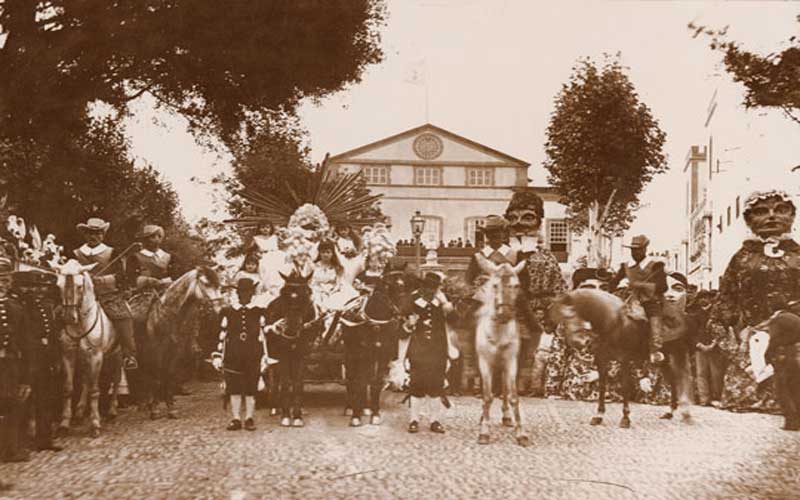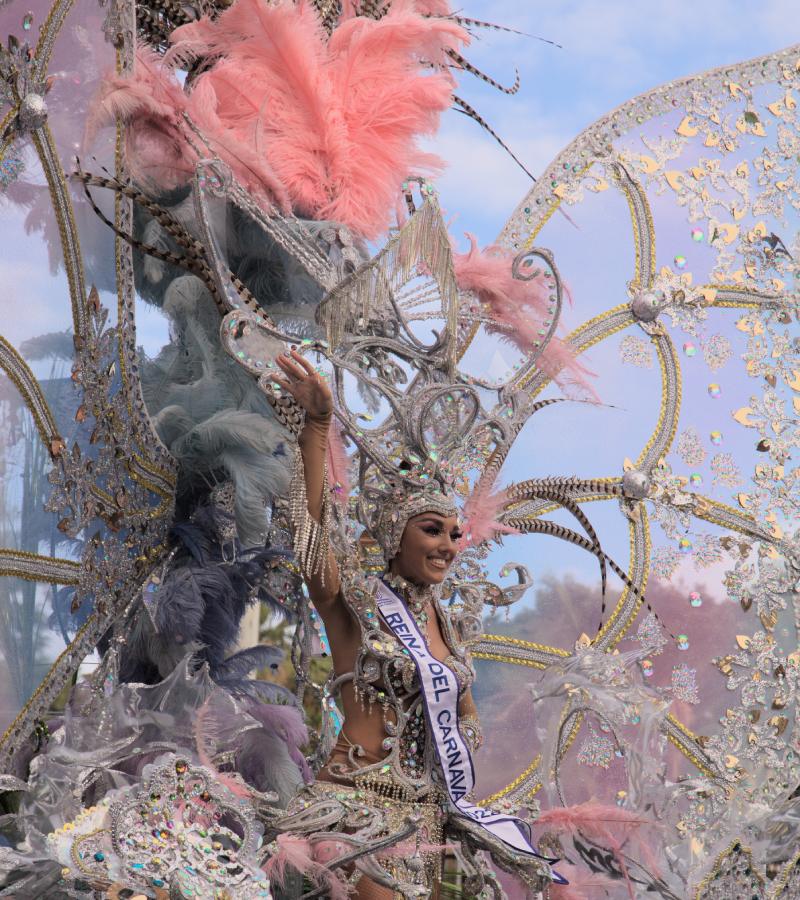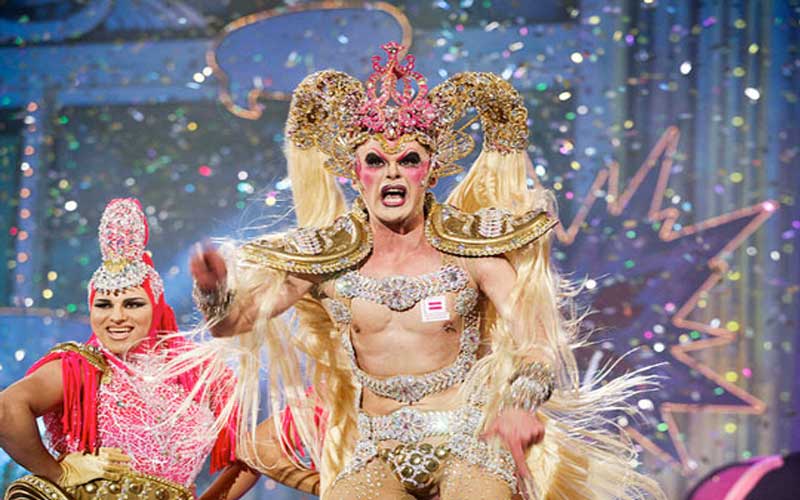Years later, on Franco’s orders, the Spanish government decided to prohibit the celebration of Carnival in the country, although many people kept the spirit of the festival alive with clandestine costume parties. In 1976, the Carnival of Las Palmas de Gran Canaria returned thanks to Manolo García, a resident who obtained governmental permission to celebrate the festival. Since then, Carnival has continued to grow in popularity and budget. Every year it is bigger than the last and it has become a cornerstone of the culture and economy of the entire island. It was also around this time that the festival as it is celebrated today began to take shape.

A carnival parade in Las Palmas, 1891. | Wikimedia
One of the main events of Carnival is the pregón (“Proclamation”), the ceremony that marks the official start of the festivities with a declaration by a person or group that is distinguished for their artistic career or contributions to the city. The pregón used to take place on the balcony of city hall, but today it is held in Santa Catalina Park, where the Verbena de las Sábanas is held afterwards.
The festival also includes multiple pageants, the most important one being the Queen Pageant (Gala de la Reina), a competition to select a young woman as the Queen of Carnival for an entire year. The contestants wear enormous dresses that almost seem to absorb them. These dresses, known as fantasías, are the true stars of the show, with their feathers and sequins. Accompanied by music and lights, the contest makes for a dazzling spectacle.

The 2022 Queen of the Carnival of Las Palmas de Gran Canaria. | Shutterstock
Since 1998 the city has also hosted a Drag Queen Pageant, considered one of the most original elements of its Carnival celebration. In a pageant similar to the Queen Pageant, 17 candidates participate in a drag queen competition that does not have any restrictions on gender or sexual orientation.

A drag queen in the 2012 carnival of Las Palmas de Gran Canaria.
The Saturday after both pageants, another one of the festival’s main attractions takes place: the Grand Cavalcade, which features the pageant winners and involves hundreds of thousands of people, including comparsas, murgas, and other Carnival groups. There are also dozens of decorated floats and carriages, creating a festive atmosphere in the streets for hours.
In 2011, the Carnival of Las Palmas was declared a Festival of Touristic Interest due to events like these, as well as many other elements such as the colorful and rhythmic contests of the comparsas and murgas, the Canine Carnival, the pasacalles, and the mogollones, which are huge gatherings to enjoy outdoor concerts or DJ sessions during the weeks of Carnival.
After all this partying, it comes time to return to everyday life. The Burial of the Sardine is the tradition that closes out Carnival in Las Palmas. On this last Saturday of the festival, crowds flood the streets to accompany the sardine in its funeral procession to Las Canteras Beach. The sardine is placed on a barge and cremated in the sea, amidst enormous fireworks displays that the crowd, dressed in the black clothes of mourning, watch in amazement. Right after that, the last big mogollón of Carnival begins and everyone in attendance sends the festival off with a good party.




